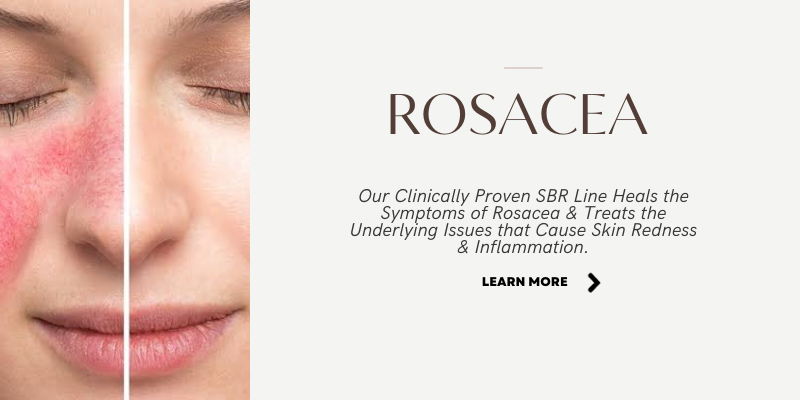Acne is usually thought of as being a teen issue. But frequent breakouts can also be a fairly common problem in adults, which may be due to hormonal shifts, the use of wrong products, a skin pH imbalance, hyperactive oil glands, or (kapha-type) genetics.
In order to reduce/manage acne you need to begin by identifying your unique skin type (dosha) and build a natural, tailor-made regimen that provides effective, long-term results without side effects. Here’s your complete guide on how to treat acne naturally:
Acne and its Types
The first thing you should know is – not all acne is the same. A bump may be pus-filled, whitehead, blackhead, or formed due to an underlying inflammatory condition. They are either comedonal (such as whiteheads and blackheads formed due to blocked pores) or inflammatory (papules, pustules, cystic acne, etc.) in nature. Some of the most common ones are briefly explained below:
- Whiteheads – closed comedones, often resembling ‘white bumps’.
- Blackheads – open comedones with ‘black bumps’.
- Papules – small red bumps that are less than 1cm.
- Pustules – these are small bumps with an inflamed head, white center, and yellow pus on the inside.
- Cystic – the most severe and painful form of acne with deep under the skin with large, pus-filled bumps (cysts).
- Adult Hormonal – due to fluctuation in hormone levels and may have deeper cysts and nodules near the jawline. Can be hereditary.
How To Manage Acne?
As stated above, the causation factors of acne are blocked or clogged pores, bacteria, overproduction of oil, and hormonal changes. The earlier you start a dedicated Organic Acne Treatment, the less pain and chances of scarring, including ‘ice-pick’ scars, redness, and other long-term damage to the skin. Severe acne may require special dermatological care, and it’s important to remember that you need to nourish yourself from the inside and out. Following are some fundamental acne management practices that dermatologists/ estheticians recommend.
1. Deep Pore Cleansing
Deep pore cleansing with the right ingredients will clean and detox pores, especially if you have large pores with Kapha/oil imbalance. Deep pore cleansing is essential to manage and remove blackheads.
For Normal or Dry Skin, our PuravedaOrganics Daily Foaming Cleanser is the perfect way to remove impurities from your pores while keeping the skin hydrated and pH balanced. The same goes with Pore Perfect Cleanser for Oily/ Kapha skin and SBR Cleanser for Sensitive/Blemished/Rosacea-prone skin. Pore Perfect Cleanser also minimizes pore size and reduces oil production naturally by balancing skin hormones.
2. Treatment with Salicylic Acid
Pure Salicylic Acid (Salix alba) is obtained from the bark of the White Willow Tree. SA is a type of Beta-hydroxy acid with serious exfoliation power. Being oil-soluble, SA is particularly effective at comedone removal (unblocking oil plugs from pores).
A cleanser or toner with the proper amount of Salicylic acid is effective in breaking down the glue-like substance that binds ‘sticky cells’ in the blocked pores, eventually reducing acne and revealing clearer skin.
3. Enzyme-based Exfoliation
If you have Normal or Oily skin, we recommend using our PVO Papaya & Honey Exfoliation Mask & Scrub at least 2-3X times a week. The natural fruit enzymes and exfoliating acids in the mask/scrub extract debris, dirt, and grime from pores, while also adding essential plant-based nutrients to the skin. For sensitive skin, use our SBR Mask for gentle exfoliation without physical abrasives that could potentially further irritate skin. (We use small walnut shell granules and NEVER plastic beads..very bad for the environment!..in our Normal formula).
Clean pores also ensure better absorption of other products. Learn more about How & When To Use Facial Treatments Masks…
4. Peptides
A recent study has shown that peptides are a promising acne treatment. The antimicrobial peptides not only check the growth of bacterial population but also treat post-inflammatory redness, hyperpigmentation, and scarring.
5. Don’t Pop!
Squeezing or popping pushes the bacteria and pus deeper into the skin which can spread them and cause more swelling, redness…. and more acne. Popping can also increase the risk of scabbing and the formation of acne scars. So patience and the use of the right ingredients are the important criteria for controlling acne.
In the next part of this series, we will discuss some of the other ways of How to Manage Acne…



